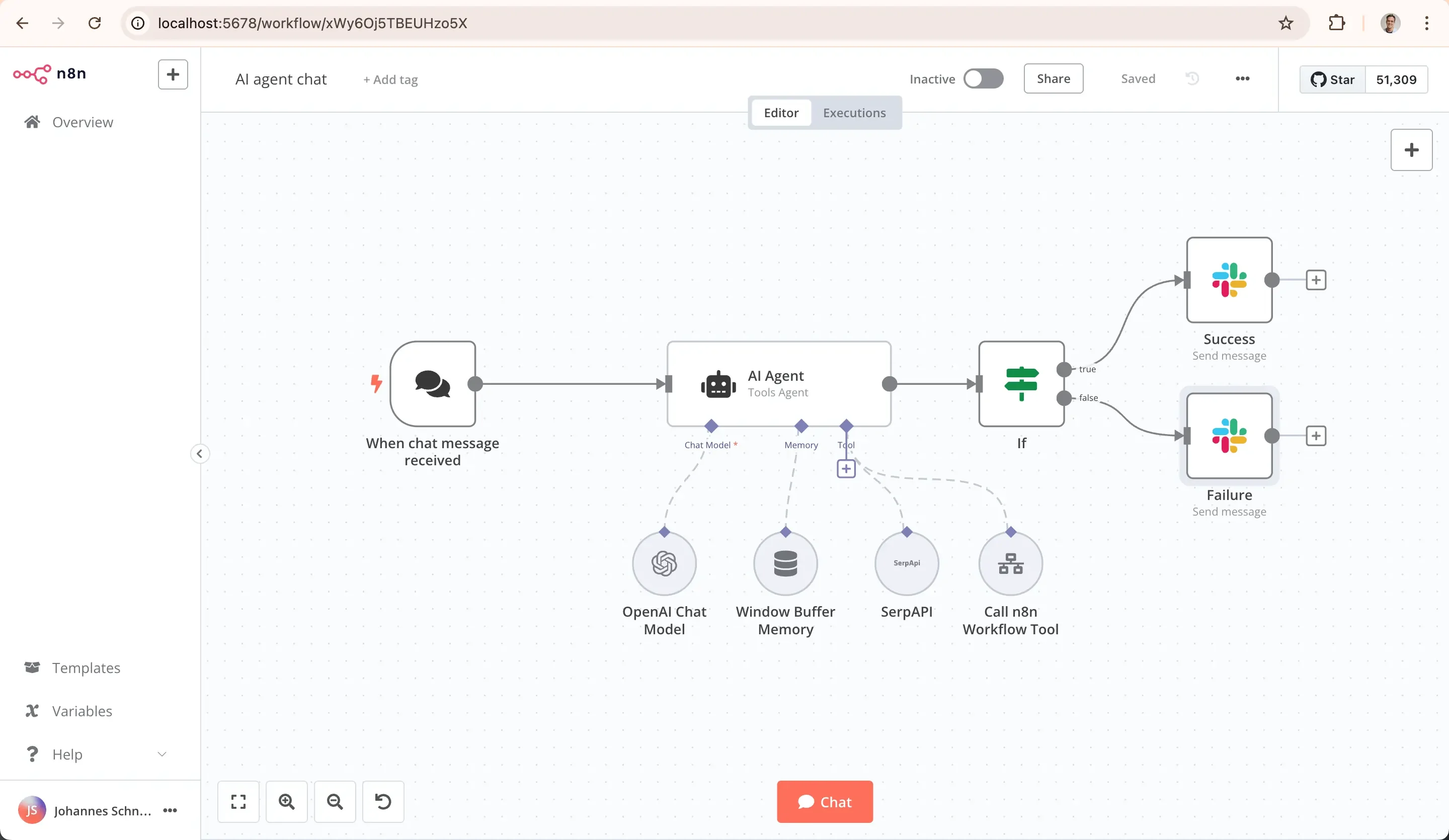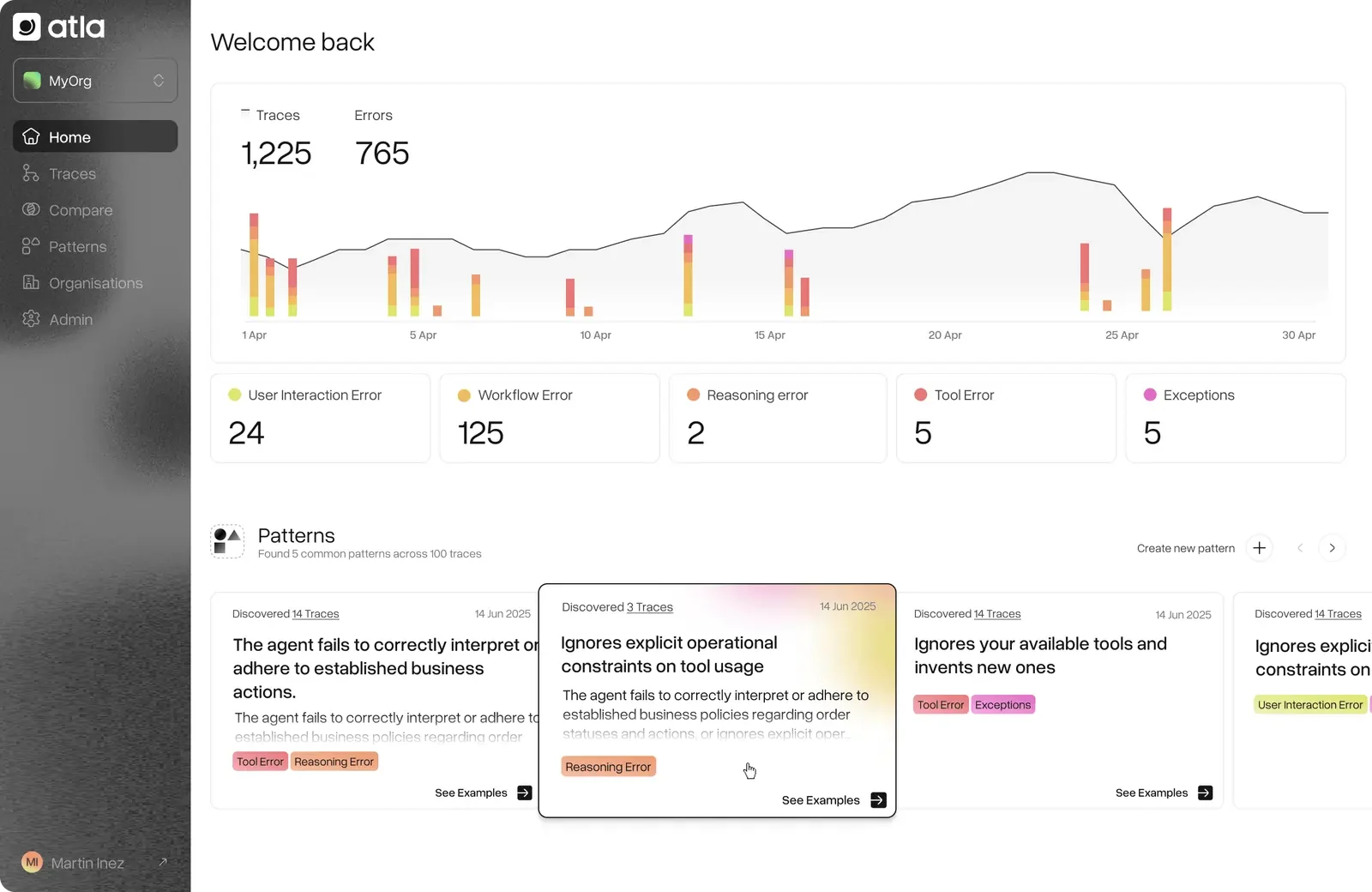Top 10 Tools and Frameworks for Building AI Agents in 2025
In today's rapidly evolving technological landscape, AI agents have emerged as game-changers in software development and quality assurance. Organizations looking to streamline task automation and multi-step workflows are turning to AI agent tools powered by large language models (LLMs). These advanced systems enable multi-agent collaboration to tackle complex software testing, development, and automation challenges.
This comprehensive guide explores the top 10 AI agent frameworks and tools that are shaping the future of autonomous systems in 2025. From building AI agents with LangChain to orchestrating multi-agent dialogues with AutoGen, we’ll compare and highlight the unique features of each option, helping you decide which to use for your next AI project.
1. AutoGen

AutoGen is an open-source framework designed to facilitate multi-agent collaboration and cooperative task-solving. It provides developers with AI agent tools to create and orchestrate AI agents that can work together to complete complex tasks.
Key Features:
Asynchronous messaging: Agents communicate through asynchronous messages, supporting both event-driven and request/response interaction patterns.
Customizable Agents: Create highly customizable agents with specific capabilities and access to external tools.
Scalable and distributed: Users can design complex, distributed AI agent frameworks that operate seamlessly across organizational boundaries.
Built-in and community extensions: The extensions module enhances the framework’s functionality with advanced model clients, agents, multi-agent teams, and tools for agentic workflows.
Enhanced LLM Optimization: Supports performance-optimized LLM inference to reduce costs.
When to Choose AutoGen:
Ideal for building AI agents that need to work together seamlessly on collaborative tasks.
Useful for multi-step workflows and task automation where different agents handle distinct subtasks.
Language: Python
GitHub Activity: Active. Check out the repository here.
Documentation: Autogen Documentation
Pro Tip: Use AutoGen’s multi-agent capabilities when you need efficient task delegation—where one agent might handle research while another focuses on content creation or computation.
Integration Ecosystem: Integrates well with Microsoft Azure, OpenAI, and Semantic Kernel for enhanced functionality.

Get the Mobile Testing Playbook Used by 800+ QA Teams
Discover 50+ battle-tested strategies to catch critical bugs before production and ship 5-star apps faster.
2. n8n

n8n is an open-source workflow automation framework that allows users to visually design, automate, and orchestrate tasks across apps and services. It bridges the gap between simple no-code platforms and fully custom-coded integrations, offering unmatched flexibility for complex automation scenarios.
Key Features:
Visual Workflow Builder: Drag-and-drop interface for designing workflows using nodes representing logical functions and apps; enables intuitive setup without coding.
Flexible Architecture: Self-hosting and cloud options for deployment; highly modular with support for custom JavaScript nodes and expression editors.
Extensive Integrations: 400+ native integrations, HTTP Request node for custom APIs, and AI-ready nodes for LLMs like OpenAI, Hugging Face, and Cohere.
Multi-Path Automation: Advanced logic branching, loops, error handling, and parallel execution capabilities for robust, scalable workflows.
Pre-Built Templates: 600+ workflow templates for popular scenarios across communication, finance, marketing, and more.
Enterprise Features: Powerful triggers (webhooks, events, cron jobs), native support for databases, APIs, queues, and security/cost controls for privacy-focused industries.
When to Choose n8n:
Perfect for automation projects needing complex logic, custom integrations and high-volume task execution where visual design and code capability are both important.
Ideal for teams wanting control over data with self-hosting, or looking for scalable automation without vendor lock-in or expensive SaaS pricing.
Great for orchestrating multi-system or AI-powered workflows in sectors like finance, healthcare, logistics, or e-commerce.
Language: n8n is built with TypeScript and runs on Node.js.
GitHub Activity: Active. Check out the repository here.
Documentation: n8n Documentation
Pro Tip: Leverage n8n’s node-based architecture to create highly customized automations, incorporate AI, and extend with custom nodes for future-proof workflows.
Integration Ecosystem: Integrates with cloud platforms (AWS, Azure, Google Cloud), APIs (REST, GraphQL), databases (PostgreSQL, MySQL), and popular business apps (Slack, Jira, GitHub, Salesforce, Shopify, Trello). Modular nodes allow rapid prototyping and easy connection of legacy systems, new services, or AI models (e.g., OpenAI, Hugging Face).
3. Crew AI

CrewAI is a Python-based framework focused on role-based autonomous agents, making it easy to implement multi-agent collaboration through a specialized team structure.
Key Features:
Role-Based Agents: Specialize each agent (researcher, analyst, content creator, etc.) to handle distinct tasks.
Flexible Tools: Integrates custom tools and APIs for communication between agents and external data sources.
Task Coordination: Ensures agents share insights and coordinate in real-time.
When to Choose Crew AI:
When you need to create specialized AI agents that collaborate in teams to accomplish complex workflows.
Great for task automation in environments like business process automation or data analysis.
Language: Python
GitHub Activity: Moderately active. Check out the repository here.
Documentation: Crew AI Documentation
Pro Tip: Use CrewAI’s coordination features for large-scale projects that involve multiple specialized agents.
Integration Ecosystem: Integrates well with LangChain and external APIs for enhanced functionality.
4. LlamaIndex

LlamaIndex is a framework designed for managing and interacting with large-scale language models. It excels at data organization, retrieval, and analysis, making it a valuable part of broader AI agent frameworks.
Key Features:
Data Management: Organize and query vast amounts of unstructured data.
Data Integration: Easily connect with databases and document stores.
Scalable: Efficiently handles large-scale data for enterprise-level projects.
When to Choose LlamaIndex:
When your AI application needs advanced data retrieval and analysis.
Ideal for task automation that relies on quick access to extensive data sets.
Language: Python
GitHub Activity: Active. Check out the repository here.
Documentation: LlamaIndex Documentation
Pro Tip: Combine LlamaIndex with frameworks like LangChain or AutoGen to supercharge task automation involving large datasets.
Integration Ecosystem: Works well with LangChain and semantic search tools for improved data handling.
5. Atla

Atla is a specialised platform for agent optimisation that automatically surfaces error patterns across your production traffic and test runs so you can ship the improvements that matter most.
Key Features:
Systematic Pattern Detection: Automatically clusters similar failures across thousands of interactions, transforming trace analysis into actionable insights rather than whack-a-mole bug fixes.
Understand your Agent: Reviews agent runs summarized into clean, readable narratives, allowing you to zoom in on specific, step-level errors.
Actionable Improvement Suggestions: Delivers targeted recommendations for high-impact error patterns detected, with fixes that can be triggered directly through Claude Code / Cursor integration.
Confidence in Deployment: Compare changes side-by-side across success metrics to ensure improvements enhance user experience without introducing regressions.
When to Choose Atla:
Perfect for tightening the development feedback loop—teams ‘ship agent improvements 7x faster’ by focusing on patterns that actually matter.
Ideal for production agents where understanding failure patterns accelerates development cycles, and for agents taking a while to get to production reliability.
Language: Python and TypeScript
GitHub Activity: Active. Check out the repository here.
Documentation: Atla Documentation.
Pro Tip: Use Atla's pattern detection to focus your improvement efforts on the systematic issues that actually degrade user experience, rather than chasing one-off bugs.
Integration Ecosystem: Works seamlessly with all major models and agent frameworks like LangChain, AutoGen, CrewAI, LangGraph, and more. Also integrates directly with your Claude Code and Cursor for implementing fixes.
6. LangChain
LangChain is a versatile framework that connects large language models (LLMs) with external data, APIs, and AI agent tools. Its robust memory features and data integration make it a go-to for dynamic, context-aware applications.
Key Features:
External Data Integration: Seamlessly link LLMs with databases, APIs, and other data sources.
Context Management: Maintains context across multiple interactions, ideal for chatbots or multi-step task automation.
Tool Integration: Built-in functionalities for document retrieval, web scraping, and more.
When to Choose LangChain:
Ideal if you need AI agent frameworks that integrate external data in real-time.
Perfect for conversational AI or situations requiring robust memory systems.
Language: Python
GitHub Activity: Highly Active. Check out the repository here.
Documentation: LangChain Documentation
Pro Tip: Use LangChain’s memory management for advanced chatbots that require personalized, context-aware conversations over multiple turns.
Integration Ecosystem: Works seamlessly with OpenAI, Pinecone, and Vector Databases for extended capabilities.
7. LangGraph

Langraph is a framework for creating knowledge graphs and performing advanced data-driven reasoning. It excels at mapping relationships between entities for deeper insights and improved decision-making.
Key Features:
Graph-Based Representation: Model and query relationships among data points.
Advanced Querying: Extract insights via complex queries on knowledge graphs.
Decision Support: Helps AI agents make informed decisions based on interconnected data.
When to Choose LangGraph:
When building AI agents that rely heavily on structured data and complex relationships.
Ideal for recommendation engines, knowledge graphs, and semantic web applications.
Language: Python
GitHub Activity: Active. Check out the repository here.
Documentation: LangGraph Documentation
Pro Tip: Use Langraph’s querying capabilities to power advanced task automation that depends on real-time data insights.
Integration Ecosystem: Works well with Rasa, LangChain, and Devin for building advanced AI agents.
LangChain vs. Langraph: A Quick Comparison
Often, teams wonder whether LangChain or Langraph is best for their particular use case. While both help with building AI agents, they cater to slightly different needs.
Feature | LangChain | Langraph |
Primary Focus | Integrating LLMs with external tools & dynamic data | Building and querying knowledge graphs |
Data Handling | Unstructured and structured data integration | Structured data with complex relationships |
Use Cases | Conversational AI, document processing, dynamic chatbots | Knowledge graphs, recommendation engines, decision support |
Integration | APIs, databases, search engines | Graph-based querying and reasoning |
Context Management | Yes, for multi-step workflows (chatbots, memory) | No, focuses on relational data insights |
Recommended For | Real-time data integration and multi-turn dialogue | Structured data analysis and semantic web applications |
Which to Choose?
LangChain is perfect for projects that demand external data integration, memory management, and multi-step reasoning.
Langraph is better when you need a solid knowledge graph foundation for advanced semantic relationships and structured data insights.
8. Haystack

Haystack is a semantic search framework perfect for enterprise-scale applications that require deep document retrieval and data analysis.
Key Features:
End-to-End Search Pipelines: Create custom pipelines to process and retrieve documents.
Semantic Search: Understands the meaning behind queries for highly relevant results.
Integration with LLMs: Combine with large language models for enhanced NLP functionalities.
When to Choose Haystack:
When you have large amounts of unstructured data and need a robust enterprise search engine.
Great for organizations looking to integrate semantic search into broader AI agent frameworks.
Language: Python
GitHub Activity: Active. Check out the repository here
Documentation: Haystack Documentation
Pro Tip: Pair Haystack with other AI agent tools like LangChain for a powerful search-and-answer system.
9. Rasa

Rasa is an open-source conversational AI framework specialized in natural language understanding (NLU) and dialogue management for advanced AI agents like chatbots or voice assistants.
Key Features:
NLU Module: Processes user inputs in natural language.
Customizable Dialogue Management: Create complex conversation flows.
Multi-Language Support: Build chatbots for diverse user bases.
When to Choose Rasa:
When your project involves chatbots or voice assistants requiring domain-specific knowledge.
Ideal for use cases where advanced NLU and multi-turn conversation flows are critical.
Language: Python
GitHub Activity: Active. Check out the repository here.
Documentation: Rasa Documentation
Pro Tip: Take advantage of Rasa’s flexible architecture to create conversation-driven AI agents that can handle everything from customer support to lead generation.
Integration Ecosystem: Integrates with Slack, Facebook Messenger, and other messaging platforms.
10. Devin

Devin is a framework aimed at building AI agents capable of advanced reasoning and external knowledge integration, making it a strong choice for complex decision-making applications.
Key Features:
Knowledge Base Integration: Connect your AI agent tools to external knowledge sources.
Autonomous Execution: Agents can make decisions and carry out tasks with minimal human input.
Modular Design: Extend the functionality of your agents with custom components and plugins.
When to Choose Devin:
When your AI solution depends on external knowledge bases or advanced reasoning.
Ideal for projects requiring task automation that involves decision-making based on real-time data.
Language: Python
GitHub Activity: Moderately Active. Check out the repository here.
Documentation: Devin Documentation
Pro Tip: Use Devin’s modular design to customize your AI agents for specific industries or specialized tasks.
Conclusion
The future of building AI agents is promising, with a versatile lineup of frameworks and tools to serve nearly any automation or intelligent workflow need. Whether your focus is on multi-agent collaboration, robust workflow automation, advanced data integration, or continuous agent improvement, these 10 frameworks offer comprehensive options:
AutoGen and n8n for collaborative, distributed systems and workflow automation.
Crew AI for role-based, team-oriented agent architectures.
Atla for monitoring, evaluating, and systematically improving agents in production.
LangChain and LlamaIndex for connecting AI agents to external data sources and managing context.
LangGraph for building knowledge graphs and enabling deep, structured reasoning.
Haystack for enterprise-level semantic search and document retrieval.
Rasa for flexible conversational AI, chatbots, and natural language understanding.
Devin for integrating external knowledge bases and enabling advanced decision-making by autonomous agents.
By selecting the right combination of tools, you can design and deploy AI agents that not only automate repetitive tasks but also make intelligent, autonomous decisions. As AI agent frameworks continue to evolve, keep exploring new ways to leverage these cutting-edge solutions for building AI agents that drive innovation and efficiency in your organization.





